 W
WBaron Bardolf or Bardolph was a title in the Peerage of England.
 W
WBaron Cantilupe was a title created in the peerage of England by writ on 29 December 1299 addressed to Willelmo de Canti Lupo or Cauntelo,.
 W
WBaron de Clifford is a title in the Peerage of England. It was created in 1299 for Robert de Clifford (c.1274–1314), feudal baron of Clifford in Herefordshire, feudal baron of Skipton in Yorkshire and feudal baron of Appleby in Westmoreland. The title was created by writ, which means that it can descend through both male and female lines. The Norman family which later took the name de Clifford settled in England after the Norman Conquest of 1066 and was first seated in England at Clifford Castle in Herefordshire. The first Baron served as Earl Marshal of England but was killed at the Battle of Bannockburn in 1314. His 8th generation descendant the 11th Baron, was created Earl of Cumberland in 1525, whose grandson the 3rd Earl was a noted naval commander. On the latter's death in 1605 the earldom passed to his younger brother, the 4th Earl.
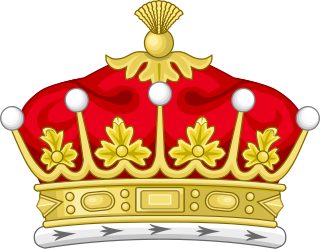 W
WEarl De La Warr is a title in the Peerage of Great Britain. It was created in 1761 for John West, 7th Baron De La Warr.
 W
WThe Ferrers family were a noble Anglo-Norman family that crossed to England with the Norman Conquest and gave rise to a line that would hold the Earldom of Derby for six generations before losing it in rebellion. They also gave rise to several lines that held English peerages, the longest-living going extinct in the male line in the 15th century, as well as a Norman branch of the family that persisted into the 13th century. A French line persisted into the 16th century.
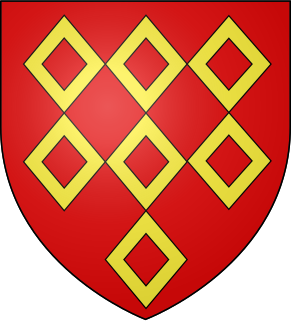 W
WBaron Ferrers of Groby was a title in the Peerage of England. It was created by writ on 29 December 1299 when William Ferrers, 1st Baron Ferrers of Groby was summoned to parliament. He was the son of Sir William de Ferrers, Knt., of Groby, Leicestershire, (d.1287) by his first wife Anne Durward, 2nd daughter of Alan Durward and his wife Margery of Scotland, and grandson of William de Ferrers, 5th Earl of Derby. The first Baron was married to Ellen de Menteith, daughter of Alexander, Earl of Menteith. In 1475 the eighth baron was created the Marquess of Dorset, and the barony in effect merged with the marquessate. It was forfeited along with the marquessate when the third marquess was attainted in 1554.
 W
WGeoffrey de Geneville, 1st Baron Geneville also known as Geoffrey de Joinville, was an Anglo-French noble, supporter of Henry III, who appointed him Baron of Trim, County Meath, and, subsequently, a staunch supporter of Edward I.
 W
WBaron Grandison was a title that was created twice in the Peerage of England, both times for men, brothers Sir Otho de Grandison and William de Grandison, who were summoned to Parliament in 1299. The barony created for Sir Otho became extinct on his death in 1328. The barony created for William fell into abeyance on the death of the fourth Baron in 1375. The present Paston-Bedingfeld baronet is a co-heir to the barony of Grandison, in recognition of which the arms of Grandison are sculpted on an oriel window at Oxburgh Hall.
 W
WBaron Hastings is a title that has been created three times. The first creation was in the Peerage of England in 1290, and is extant. The second creation was in the Peerage of England in 1299, and became extinct on the death of the first holder in c. 1314. The third creation was in the Peerage of England in 1461, and has been in abeyance since 1960.
 W
WThe title Baron Moels was created once in the Peerage of England, in 1299, and passed into abeyance with the death of the fourth lord in 1337. The four men who by modern usage are held to have been Barons Moels were:John Moels, 1st Baron Moels (1269–1310) was on 6 February 1299 summoned to Parliament, thereby becoming first Baron Moels. He was the second son of Roger de Moels (c.1233-1295) the eldest surviving son and heir of Nicholas de Moels, feudal baron of a moiety of North Cadbury, Somerset. Following John's death, any inherited title created by his Parliamentary summons would have been held in succession by his three sons: Nicholas Moels, 2nd Baron Moels (1289–1315/6), summoned to Parliament from 1311, he married Margaret Courtenay (d.1349) daughter of Sir Hugh Courtenay (d.1292), feudal baron of Okehampton and father of Hugh Courtenay, 1st Earl of Devon (d.1340). The marriage was without issue, and his heir was his next brother. Roger Moels, 3rd Baron Moels, (1295–1316), heir to his brother but dead without issue within months, he was never summoned to Parliament but by modern usage held to have briefly been Baron Moels. John Moels, 4th Baron Moels, K.B. (1294-1337), likewise never summoned to Parliament but his brothers' successor as Baron Moels by modern usage, he married Joan Lovel, daughter of Richard Lovel of Castle Cary, Somerset. He died leaving two daughters, co-heiresses to a moiety of the feudal barony of North Cadbury, the de Moels barony by writ and other lands, and between whom the barony is held to have fallen into abeyance: Muriel the eldest married Thomas Courtenay (d.1356/1362), 5th son of Hugh Courtenay, 1st Earl of Devon (1275–1340). Isabel the younger daughter married William de Botreaux (d.1349), of Boscastle, Cornwall, Sheriff of Cornwall, whose issue was William de Botreaux, 1st Baron Botreaux (1337–1391)
 W
WThe titles Baron Montacute or Baron Montagu were created several times in the Peerage of England for members of the House of Montagu. The family name was Latinised to de Monte Acuto, meaning "from the sharp mountain"; the French form is an ancient spelling of mont aigu, with identical meaning.
 W
WSeveral members of the Mortimer family were summoned to Parliament during the reign of Edward I, thereby making them hereditary barons in the Peerage of England. The most important family with this surname were the lords of Wigmore, a marcher lordship on the borders of Herefordshire and Shropshire with Wales, living at Wigmore Castle. The second Baron Mortimer of Wigmore was created Earl of March.
 W
WSeveral members of the Mortimer family were summoned to Parliament during the reign of Edward I, thereby making them hereditary barons in the Peerage of England. The most important family with this surname were the lords of Wigmore, a marcher lordship on the borders of Herefordshire and Shropshire with Wales, living at Wigmore Castle. The second Baron Mortimer of Wigmore was created Earl of March.
 W
WThe title Baron Percy has been created several times in the Peerage of England. The first, soon after 1066, a feudal barony rather than a barony by writ, which continued in parallel with the later baronies by writ, until the abolition of feudal tenure by the Tenures Abolition Act 1660. The second, created by writ in 1299, became extinct in 1517. The third, created by writ in 1557, became extinct in 1670. The present creation was in 1722, by writ of summons.
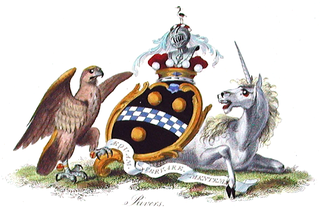 W
WBaron Rivers was a title that was created four times in British history, twice in the Peerage of England, once in the Peerage of Great Britain and once in the Peerage of the United Kingdom.
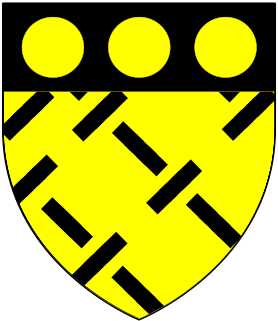 W
WBaron St Amand was a title created twice in the Peerage of England: firstly in 1299 for Amauri de St Amand (1269-1310), who died without issue, when it became extinct; and secondly in 1313 for his brother John de St Amand (1283/6-1330).
 W
WBaron St John of Basing is a former title in the Peerage of England. The family of St John of Basing in Hampshire and of Halnaker in Sussex was descended in the male line from the Norman Hugh de Port (d.1091) lord of the manor of Port-en-Bessin in Normandy who took part in the Norman Conquest of England in 1066, and was subsequently granted 53 manors in Hampshire. They had adopted the St. John surname by 1205.)
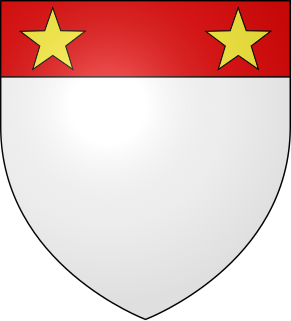 W
WBaron St John may refer to several different peerage titles:
 W
WBaron Stafford, referring to the town of Stafford, is a title that has been created several times in the Peerage of England. In the 14th century, the barons of the first creation were made earls. Those of the fifth creation, in the 17th century, became first viscounts and then earls. Since 1913, the title has been held by the Fitzherbert family.
 W
WBaron Strange is a title that has been created several times in the Peerage of England. Two creations, one in 1295 and another in 1326, had only one holder each, upon the death of whom they became extinct. Two of the creations, that of 1299 and that of 1628, are extant. All four baronies of Strange have been created by writ, which means that they can pass through both male and female lines.
 W
WBaron Sudeley is a title that has been created thrice in British history, twice in the Peerage of England and once in the Peerage of the United Kingdom. The first creation came in the Peerage of England in 1299 when John de Sudeley was summoned to Parliament as Lord Sudeley. On the death of the third Baron in 1367 the title fell into abeyance. The abeyance was terminated in 1380 when Thomas Boteler, the fourth Baron, became sole heir. The sixth Baron was created Baron Sudeley by letters patent in 1441. He served as Lord High Treasurer from 1444 to 1447. On his death in 1473 the 1441 creation became extinct while the 1299 creation once again fell into abeyance.
 W
WAymer de Valence, 2nd Earl of Pembroke was a Franco-Welsh nobleman. Though primarily active in England, he also had strong connections with the French royal house. One of the wealthiest and most powerful men of his age, he was a central player in the conflicts between Edward II of England and his nobility, particularly Thomas, 2nd Earl of Lancaster. Pembroke was one of the Lords Ordainers appointed to restrict the power of Edward II and his favourite Piers Gaveston. His position changed with the great insult he suffered when Gaveston, as a prisoner in his custody whom he had sworn to protect, was removed and beheaded on the instigation of Lancaster. This led Pembroke into close and lifelong cooperation with the King. Later in life, however, political circumstances combined with financial difficulties would cause him problems, driving him away from the centre of power.
 W
WBaron Zouche is a title which has been created three times, all in the Peerage of England.